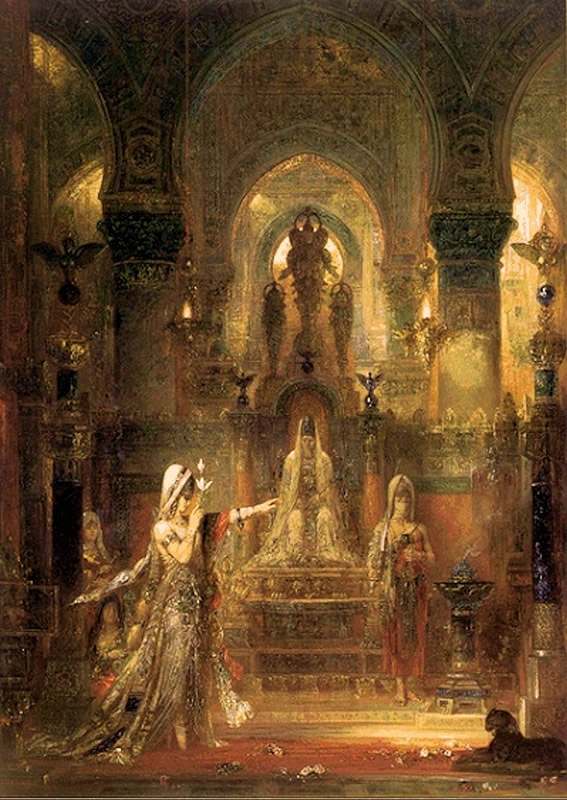I cannot look at this painting without thinking it is an unintentional portrait of the artist’s subconscious. As in a dream, all the characters are Moreau; he is the half dead king Herod trapped in a fantasy Hindu castle, as intricate as the human brain, but where light enters only faintly. Salome is the artist’s chaotic, repressed self, and it is really his own head, not John the Baptist’s, he wants her to cut off in order to free his mind of the clutter of signs and symbols that have mummified his creative energy. He wants Salome to break the mental chain of logic so that emotional light can pour in. Salome is the merciful angel of his subconscious, whom he loathes and adores, fears and admires, and he has loaded her down with jewels until she drowns in a sea of excess. She carries the Lilly, a Buddhist symbol of perfect unity and the Catholic symbol of rebirth, although Moreau only saw it as the flower of death.
The painting is tragic, and its victim is the artist himself. It is about the frustrated cry of the artist who wanted what all Symbolist artist and poets of his time wanted: to be devoured by the feminine, by mystery, emotion, and the unknown, so that for a moment, the artist might transcend into the magic realm of imagination and pure sensation.
Artillery Magazine Vol 1 no. 6 Summer 2006
